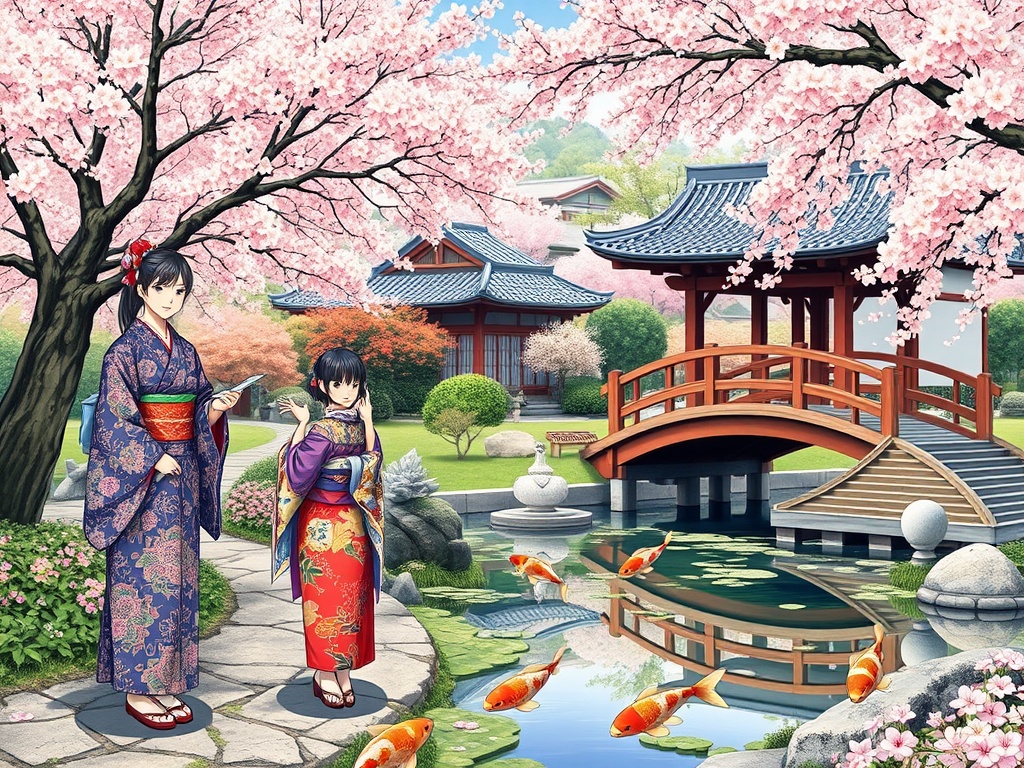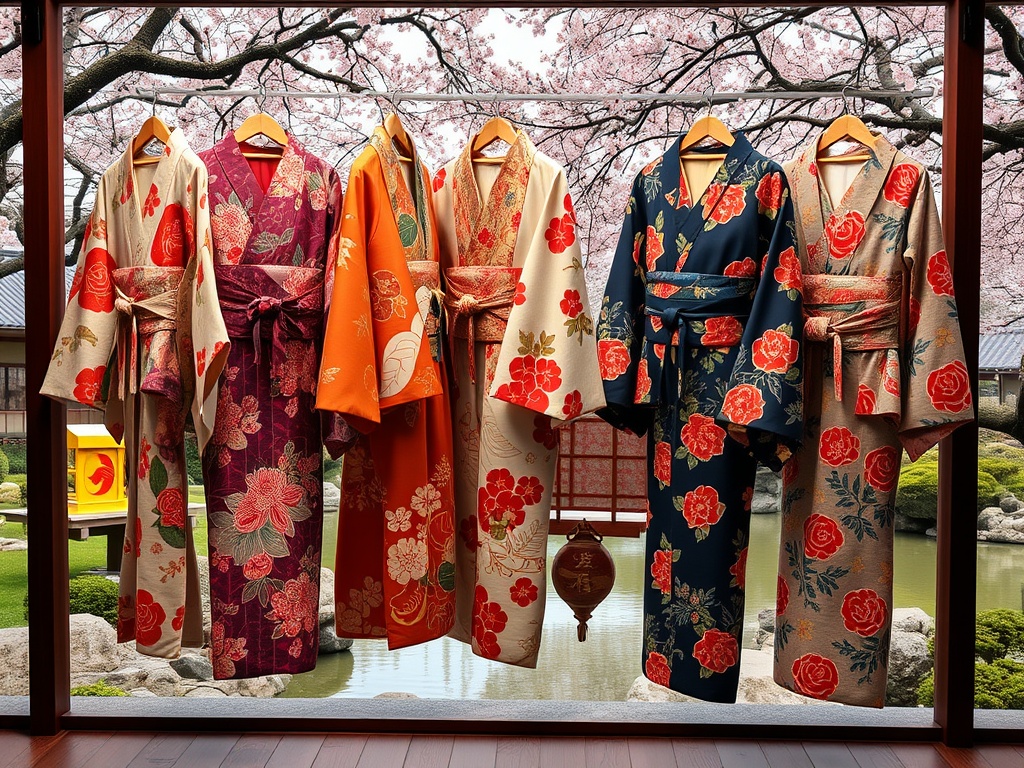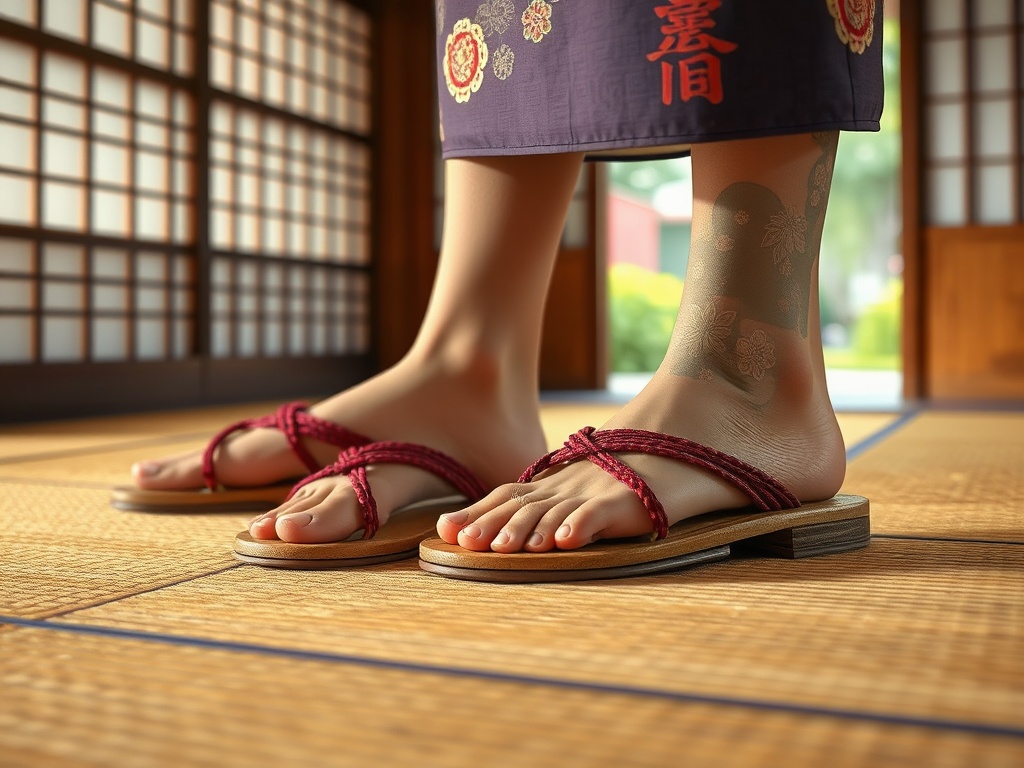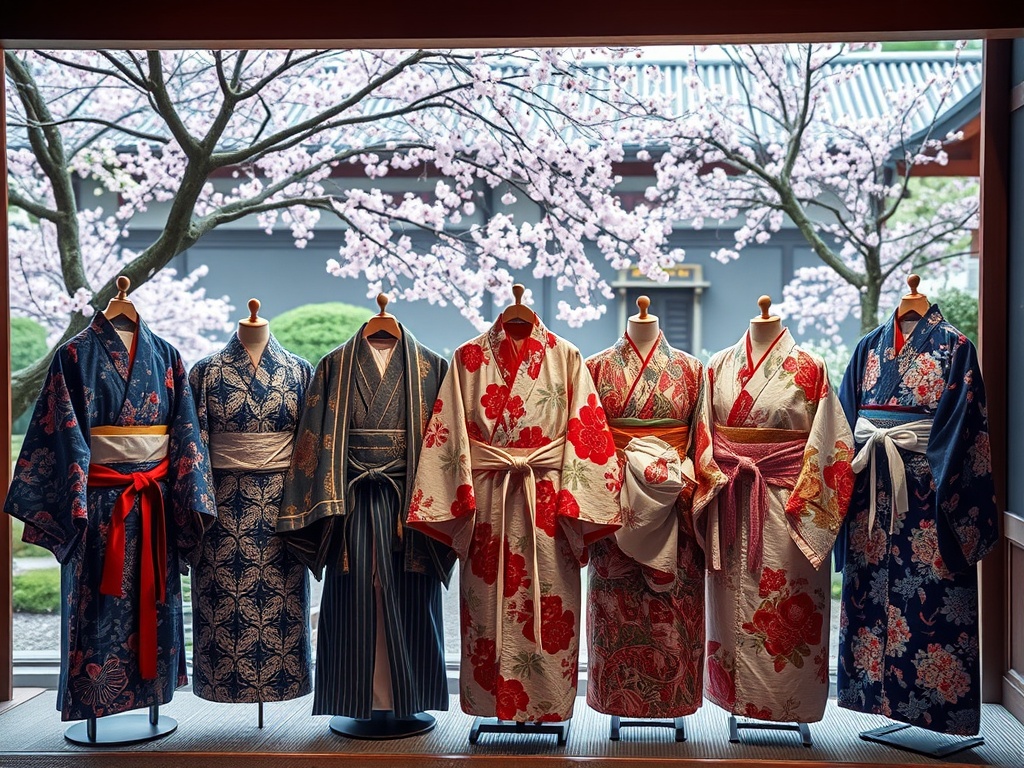Unraveling the Kimono: A Tapestry of Time and Tradition
Win a Free Trip to Japan!
Experience cherry blossoms and ancient temples
The kimono, much like Japan itself, is an exquisite blend of the past and the present. This traditional garment, with its elegant folds and vibrant colors, has not only stood the test of time but remains a symbol of Japanese culture and identity. As travelers explore the fascinating world of Japanese attire, the kimono offers a colorful tapestry woven with history, art, and the essence of Japanese aesthetics.
The creation of a kimono is an art form that has been perfected over centuries. Each kimono is a masterpiece of design and craftsmanship, often made from silk and featuring intricate patterns. Artisans use traditional dyeing techniques, such as yuzen (hand-painting) and shibori (tie-dye), to bring life to the fabric. These garments are not only a fashion statement but a form of storytelling, depicting scenes from nature, historical events, or seasonal changes.
Understanding the nuances of kimono can be a delightful cultural journey. The type of kimono worn often signifies the wearer’s age, marital status, and even the season. Here’s a list that highlights some of the most common types of kimono:
- Furisode: A long-sleeved kimono worn by unmarried women, typically at coming-of-age ceremonies or weddings.
- Tomesode: A short-sleeved kimono worn by married women, often at formal occasions.
- Yukata: A casual, lightweight kimono usually made of cotton, perfect for summer festivals.
- Hakama: Wide-legged trousers traditionally worn over a kimono, often seen in martial arts or at graduation ceremonies.
While rooted in tradition, the kimono continues to inspire modern fashion and culture. Today, designers are reimagining the kimono, infusing it with contemporary styles and fabrics. Tourists visiting Japan can experience this blend of old and new by renting kimonos for a day, immersing themselves in the beauty and grace of this timeless attire. Whether wandering through the serene gardens of Kyoto or the bustling streets of Tokyo, wearing a kimono allows travelers to step into another world, one steeped in history and elegance.
Footsteps in Fashion: The Art of Japanese Footwear
As you explore the world of traditional Japanese garments, it becomes evident that the elegance of attire extends beyond clothing to include the art of footwear. Japanese footwear, with its unique designs and cultural significance, plays an essential role in complementing the traditional dress, particularly the iconic kimono. Whether you find yourself strolling through the historic streets of Kyoto or attending a vibrant festival, understanding the nuances of Japanese footwear adds depth to your cultural journey.
The most recognizable forms of traditional Japanese footwear are geta and zori. These shoes are more than just functional; they are a statement of heritage and style. Geta, typically made of wood, are elevated sandals that help keep the kimono hem from touching the ground. With their distinct clattering sound, they evoke memories of Japan’s historic towns and temples.
On the other hand, zori are straw sandals, often associated with formal wear. They are considered the formal counterpart to the casual geta. Worn with tabi socks, zori offer a sophisticated touch to traditional attire, making them perfect for ceremonies and special occasions. These sandals have influenced modern designs, inspiring footwear trends worldwide.
In today’s fashion scene, the influence of traditional Japanese footwear is evident in contemporary designs. Designers have taken inspiration from the simplicity and structure of geta and zori, incorporating these elements into modern fashion. This blend of the old and new has opened up new avenues for style, where tradition meets innovation.
The cultural significance of these shoes is profound. They are not just accessories but are integral to the wearer’s identity, often reflecting their status and the occasion. Wearing traditional footwear is a way for travelers to connect with Japan’s rich heritage, providing a tactile experience of the past.
For those intrigued by these timeless styles, exploring Japanese footwear offers a window into the country’s artisanal craftsmanship and its enduring legacy in the world of fashion.
Beyond the Kimono: Discovering Hidden Treasures of Japanese Attire
While the kimono often takes center stage in discussions of Japanese fashion, the realm of traditional Japanese garments extends far beyond this iconic piece. Delving into the lesser-known components of Japan’s sartorial legacy reveals a rich tapestry of clothing that reflects regional diversity and historical evolution. For those eager to immerse themselves in the cultural fabric of Japan, exploring these hidden treasures offers a unique perspective on the nation’s heritage.
The jūnihitoe, translating to ‘twelve-layer robe,’ is a courtly garment from the Heian period that epitomizes the grandeur of ancient Japanese aristocracy. This elaborate attire, worn by noblewomen, consists of multiple layers, each crafted from silk and dyed in contrasting colors, creating a visually stunning effect. Though rarely seen today, the jūnihitoe remains an emblem of Japan’s historical opulence and can often be admired during imperial ceremonies or in historical reenactments. For travelers, witnessing a jūnihitoe is akin to stepping back in time to an era of elegance and refinement.
Originally worn by workers and artisans, the happi coat is a short, kimono-style jacket that has transformed into a symbol of celebration and community. Adorned with family crests or festival symbols, happi coats are a common sight at Japanese festivals, where they are worn by participants and performers alike. Their lightweight design and vibrant patterns make them a perfect souvenir for travelers looking to take a piece of Japanese culture home. Whether worn at a festival or as a casual garment, the happi coat embodies the spirit of Japanese hospitality and joy.
For those interested in uncovering more of Japan’s clothing treasures, here’s a list of unique garments that offer insight into the country’s diverse attire:
- Haori: A traditional waist-length jacket worn over the kimono, adding an extra layer of elegance.
- Hakama: Wide-legged trousers that are both practical and ceremonial, often used in martial arts or formal occasions.
- Jinbei: A casual summer outfit consisting of a top and shorts, ideal for hot weather.
- Sarashi: A long strip of cloth wrapped around the body, once used as undergarments or for samurai armor.
Each of these garments contributes to the rich mosaic of Japanese traditional attire, offering a deeper understanding of the cultural nuances and historical contexts that have shaped Japanese fashion over the centuries.
The Language of Layers: Understanding Japanese Garment Etiquette
Embarking on a journey through the world of traditional Japanese attire is akin to stepping into a realm where each fold and layer tells a story, and where the art of dressing is both a personal and cultural expression. Japanese garment etiquette is a fascinating aspect of this sartorial tradition, steeped in rules and meanings that reflect the social and historical nuances of the culture. For travelers, understanding these layers of etiquette not only enriches the experience but also offers a deeper connection to Japan’s rich heritage.
In the art of Japanese dressing, layering is not merely about style but serves a practical and symbolic purpose. Each layer can convey status, season, and even subtle emotions. For instance, the layering of a kimono with an obi (sash) and an haori (jacket) is a delicate balancing act that requires skill and understanding. Mastering this technique is essential for those wishing to immerse themselves fully in the traditional Japanese experience.
Japanese garments often reflect the changing seasons, a concept deeply ingrained in the culture. Kimono patterns and colors are selected to match the season, with motifs such as cherry blossoms for spring or maple leaves for autumn. This seasonal awareness extends to the choice of fabric, with lighter materials preferred for summer and heavier silks for winter. Travelers should be aware of these seasonal symbols to appreciate the cultural significance behind the attire.
When donning traditional Japanese attire, adhering to certain etiquette rules is crucial. Here are some key guidelines to keep in mind:
- Do wear the left side of the kimono over the right; the opposite is reserved for funerals.
- Don’t forget to adjust your obi carefully, ensuring it sits correctly at the back.
- Do select garments and accessories that complement the occasion and setting.
- Don’t wear heavy perfumes, as subtlety is valued in Japanese culture.
By following these guidelines, travelers can engage respectfully and authentically with this beautiful tradition, enhancing their cultural experience in Japan.



